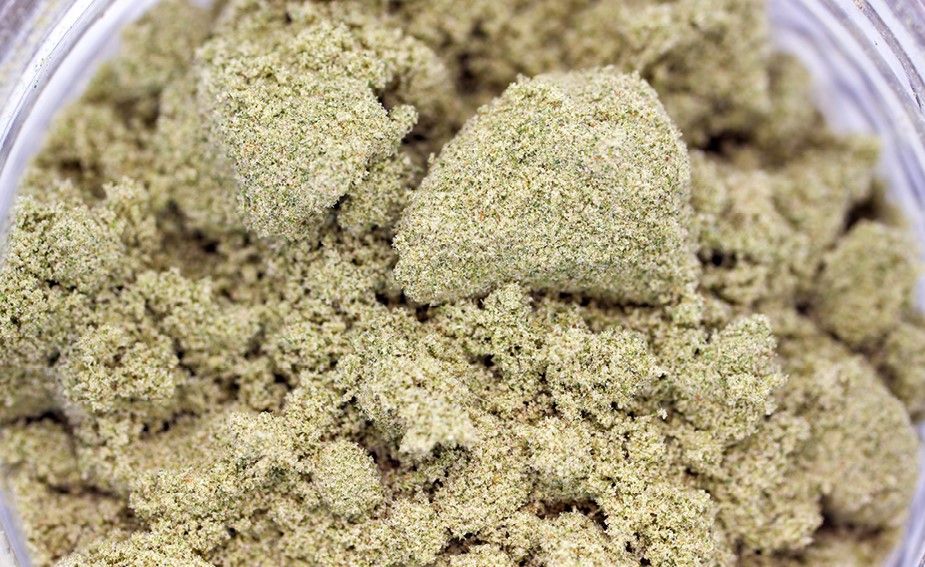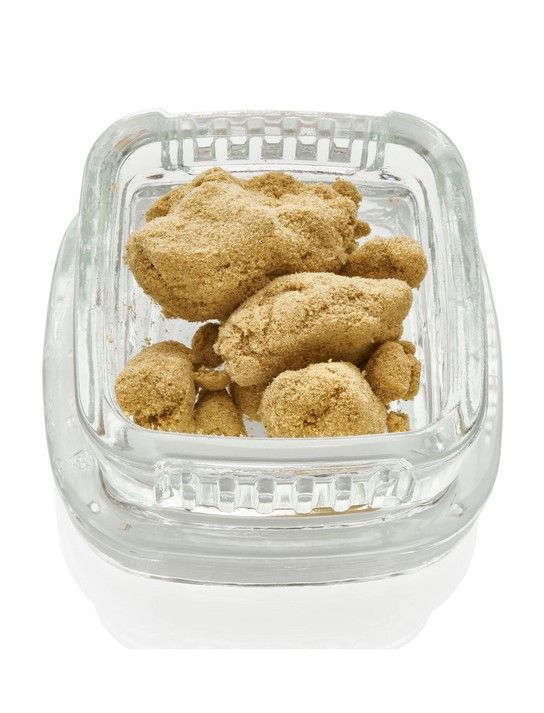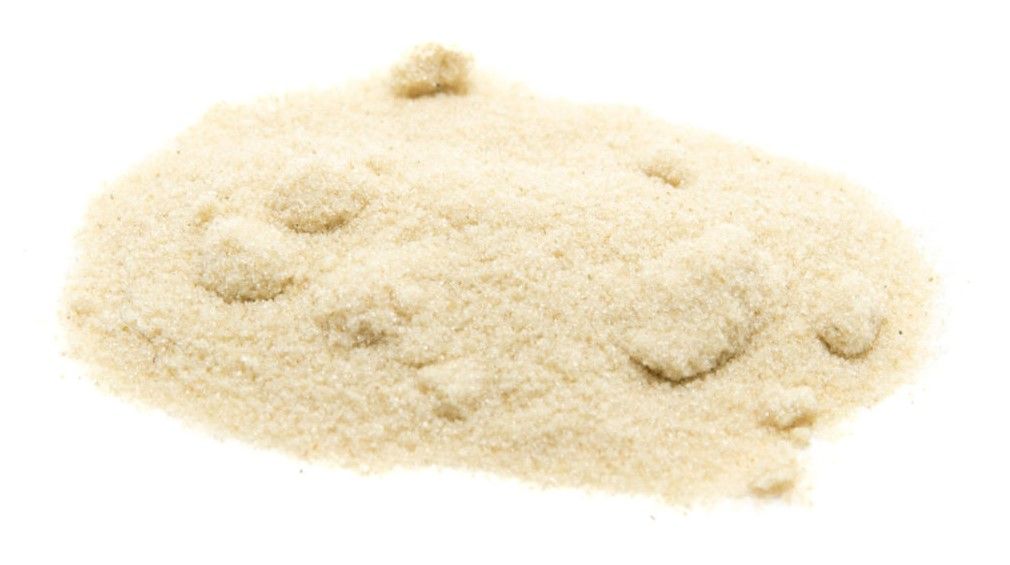Making dry sift hash at home is quite simple if you have the proper tools. Dry sift hash, like kief, requires a mesh filter to obtain the highest-quality material that may be dabbed, smoked, or used to make edibles.
The easiest and safest concentrates to make at home are dry sift hash and kief. The procedure is as simple as removing trichomes from your cannabis buds with a series of screens that vary in size. After the trichomes are removed, dry sift hash can be used alone, sprinkled on joints, dabbed for an extra-intense experience and flavor, or transformed into almost any food you can think of.
What Is Dry Sift Hash?
Hash is an extract from cannabis that contains high levels of cannabinoids and terpenes. It comes from the trichomes, which are resin glands on cannabis flowers. When smoked, Hash gives a strong, euphoric effect .
Dry sift hash is kief that has been compressed into a coin. Kief is the extremely fine powder that builds up at the bottom of multi-chamber grinders over time. This kief can be used to add potency to regular bowls and joints, or it can be collected and pressed into dry sift hash.
Dry sift hash is created by using a grinder to separate the trichomes from the plant matter. However, this method is not refined or scalable. A better method would be to use a pollen box with a mesh screen.
Fortunately, dry sift is the most simple and cheapest type of hash to produce, with a long and illustrious history in modern cannabis culture. It’s just as potent as other types of hash, but it was developed more recently.

Understanding Different Types of Trichomes
The term “quality” might be a little difficult to understand when it comes to dry sift hash, so let’s define trichomes first.
Attached to the surfaces of cannabis leaves and flowers are trichomes – they resemble small mushrooms. Although difficult to see without magnification, these structures play an important role in the plant’s chemistry. To the naked eye, they appear as a powdery coating on maturing buds.
The trichomes on a cannabis plant produce thick resin. This is where cannabinoids, terpenes, and other metabolites are found. It’s believed that the resin evolved to help the plant protect itself from predators and stress related to changes in temperature.
Microscopic imaging has given us a new perspective on trichomes. Scientists have discovered at least three different varieties of trichomes so far. It is uncertain whether different types of trichomes generate distinct metabolites at this point. We do know, however, that some sorts produce greater concentrations of chemicals than others. Here’s a quick rundown:
- Bulbous: The enzymes in the remaining two groups convert nutrients from one form to another.
- Capitate-Sessile: The capitate-sessile trichome is easily identified by its round head, which sits atop a short stalk. This type of trichome features a ring of secretory cells and cavities that contain various metabolites. In general, the capitate-sessile trichome produces more metabolites than the bulbous variety, but less than the capitate-stalked type.
- Capitate-Stalked: Capitate-stalked trichomes are the ones that have a circular head or cap on a longer stem than sessile trichomes. They also develop on flowers from sessile-like precursors as buds begin to bloom and sit higher above the plant’s surface tissue. Capitate-stalked trichomes contain the greatest amounts of cannabinoids and terpenes.
Different Melts of Dry Sift Hash
The high-quality marijuana that you’re looking for is referred to as “silver trim,” which comes from the term “trim.” The word “trim” refers both to a cannabis plant and the valuable part of its resin glands that is removed in order to create high-grade hashish. A THC content range of 10% or greater is known as full-melt; anything between 5% and 10% can be considered half-melt; and anything below 5% may be called kief.
The highest quality of dry sift is full-melt, which can be dabbed or vaporized completely without any residue. Half-melt hash does not vaporize as well, but it works great for adding to a bowl or joint. Kief is the lowest grade of dry sift since it has not been refined aside from being put through a grinder. Unlike higher-grade melts, kief crackles and burns when smoked rather than melting.

How to Make Dry Sift Hash
Making dry sift hash is very similar to preparing kief, but instead of using a grinder, you’ll need to purchase or construct a pollen box, precision extraction bags, or some other form of sifter box. A pollen box is simply a mesh grid and collection chamber combined into one. It resembles a box (usually constructed of plastic or wood) and uses mechanical agitation to filter the trichomes. Fortunately, pollen boxes are reasonably inexpensive, so if you intend on making dry sift on a regular basis, it’s worth buying one.
To separate the trichome heads from any extra plant material for the greatest refined product feasible, some skilled hash makers utilize a sequence of pollen boxes or filter bags with progressively smaller mesh sizes.
What Micron for Dry Sift Hash?
A micron bag or screen is a mesh with tiny holes, often known as a one-micron filter. It’s about 1/1000th of a millimeter in diameter.
You may discover these kinds of niche bags on the internet with ease, but it’s critical to get ones with the correct micron counts.
The most popular dry sift hash sizes are 25–50µ. The finer the mesh, the higher quality of the hash (that’s your full-melt stash), with the exception of quantity.
Dry Sift Hash: Step-by-Step Instructions
We can now look at the procedure for dry sifting hash at home. All you really need is some bud, your pollen box/micron bags, and a collection device (like a card or knife) to gather your kief.
Step 1: Prepare Cannabis Material
If you want to produce the best possible hash, it’s key to have a lot of plant material to start out with. This could be dried and cured buds or trim from your last grow – anything that will make the process worth your time. Our team suggests using 28-50 grams at minimum, but preferably more. The great thing about dry sift is that it’s easy to change the equipment based on how much product you’re working with.
It’s preferable to sieve buds intact, but if you must use them, remember that they should be broken down somewhat to expose more of the mesh surface area. You don’t want to grind your bud before sieving it, but you do want to break it down into smaller pieces.
Step 2: Freeze Your Plant Material
If you want an easier process that yields better results, freezing your bud beforehand is the way to go. Simply place your plant material in the freezer for 24 hours before beginning the dry sift process. This will make the trichomes brittle and much easier to dislodge when you start sifting.
Some hash makers, on the other hand, find that it is preferable to work with this sort of hash in a cooler atmosphere—such as an air-conditioned area. This keeps the flowers and trichomes firm, dry, and separates them from sticking together.
Step 3: Prepare Pollen Box / Extraction Bags
Before beginning, gather your pollen box or series of micron mesh bags. Ensure that the sifting device you are using is durable and has a collection chamber at the bottom; trichomes should not be lost during this method.
If you want to produce a high-quality dry sift hash, use several pollen boxes or multiple micron extraction bags with successively finer mesh. This way, you’ll have different grades of dry sift hash to choose from.
Step 4: Start Sifting
To start, place a few handfuls of frozen flower/trim onto the mesh surface of the pollen box, or into the first micron bag.
Shake the box/bag from side to side and backward and forward. A thin layer of trichomes will begin to form at the bottom of the catch tray after a few shakes. You may need to apply pressure, such as via a credit card, to continue breaking down and exposing additional trichomes to the mesh in order for more trichomes to form at the bottom of the catch tray.
You’ll want to repeat this process until you’ve acquired the amount of trichomes you desire. This procedure might take anywhere from half an hour to a couple of hours depending on how big your stash is and how small your pollen box/micron bag system is.
Step 5: Careful Collection
Now it’s time to gather your trichomes by removing the catch at the bottom of the pollen box and collecting the dust with a fine-edged instrument.
You can then compress your dry sift, sprinkle it on bong bowls, or refine it further with more high-tech extraction methods from here.

What to Do With Dry Sift Hash?
Dry sift hash that is of good quality should have the same consistency as sand and smell like your marijuana, but with a more potent scent. You can use this cannabis extract for all sorts of activities including adding it to joints or even cooking. However, these are not its only uses. Below are some other popular ways people employ dry sift.
Can You Press Dry Sift Hash?
You can also dry sift hash, which is accomplished by using a pollen press or heat pressing a rosin. If you want to keep your product for an extended length of time, forming coins may be useful. The primary benefit of this is that only the outer layer of your hash will be exposed to air, ensuring that the inner portion remains intact.
Can You Dab Dry Sift Hash?
Dab dry sift hash as is, but if you want to enhance its flavor and quality, it’s recommended that you press it before smoking. Only the best hash in the business should be dabbed; otherwise,
How to Store Dry Sift Hash
After you dry and press your hash, keep it in an airtight container to preserve its integrity. You can store the container in the fridge or a cool, dark place outside of the fridge depending on how long you plan on keeping your hash.
If you follow these guidelines, your dry sift hash should last a long time—unless you use it all up in the meantime.
While some users may argue the benefits of bubble hash over dry sift hash, those who have made both types agree that dry sifting creates a better product. Regardless, making dry sift is a safe, fun way to make your own hash right at home – and it doesn’t cost much either! Give it shot!

